- Learning time
- 40 minutes
- First play time
- 120 minutes
Daybreak
Designed by: Matt Leacock,Matteo Menapace
Daybreak is a co-operative game where all players – representing world powers – work together to save the planet: there are no turns and players can and should talk and plan together as much as feels appropriate. The goal is to change the environmental dynamic from the (as writing) potential catastrophe we currently face into something more optimistic. As a collective, your goal is to reach Drawdown, the moment when more carbon is removed than the amount produced. But it’s not easy.
Without getting into the fine details of setting up, everyone has a personal board which represent either Europe, China, the USA and the Majority World. The boards track how much energy you produce – both clean (green side) and dirty (brown side) as well as a number of other tokens that represent the production of carbon: factories, houses, transport, et cetera. Each of the game’s six rounds follow a series of phases. In the Global phase, players get to choose a global project that will (perhaps) help them in some way (good!), but you also draw Crisis cards (bad!) that will be addressed later in the round.
The meat of the game is the Local phase. Here everyone draws a number of Local cards and can use them in one of three ways. Above your board are five projects that can be used to help tackle the climate crisis in some way: advancing green energy, removing dirty energy, planting trees, cleaning up oceans and so on. There are numerous projects that can be undertaken and many of them become more powerful when cards with matching symbols are played beneath the project card: for instance, Clean Electricity Plants produce one green energy token for every pylon symbol on and beneath that project card (these are known as ‘stacks’: only the top card is an active project but every card beneath it makes it more powerful). Alternatively, you can replace a project and start a new one by playing a new card on top of it. And finally you can ‘run’ a project by discarding a card: for instance, if I want to run Clean Electricity Plants I need at least one card left in my hand to do so; discarding it and getting the benefit.
So the local cards are your avenue to progress, and as flagged above, players can discuss whom should do what and in what order. There’s no turns here and no hierarchy – this phase continues as long as someone has cards to play.
If the local phase feels progressive, it is. But the poop is about to hit the proverbial fan when the Emissions phase arrives. Now all players total their collective emissions in the form of dirty energy and other carbon-producing elements on their boards. Carbon is very literally produced in the form of brown cubes, some of which can be offset by the ocean and trees on the board. The rest, however, goes into the Thermometer on the board and will trigger temperature rises. These, when we move on to the Crisis phase, potentially cause tipping points on the board which will then cause further temperature rise, and this is all before you begin to address the Crisis cards mentioned earlier: usually, one will be face-up (and so foreseeable and potentially negatable) but more will be face-down, and more will arrive as the temperature climbs.
There are three ways to lose: running out of time (there is no round 7!) the temperature reaching a 2c rise, or any player reaching 12 communities in crisis, represented by tokens tracked on your player board. To win, ‘all’ you have to do is get the carbon under control – easier said than done.
The guru's verdict
-
Take That!
Take That!
None from the other players. Plenty from the game.
-
Fidget Factor!
Fidget Factor!
Low to moderate, depending on how engaging you find the discussions over how best to proceed.
-
Brain Burn!
Brain Burn!
It's more a tactical game than a strategic one, with players literally playing the hand they're dealt. While the theme comes through loud and clear in both the card text and fire-fighting vibe, succeeding here is about spotting and maximising opportunities according to the lay of the land - what are the Crisis cards? How can we lower the temperature? Who most needs to reduce carbon.
-
Again Again!
Again Again!
Lots of moment-by-moment randomness built into the game with the huge deck of local cards, so Daybreak is always a challenge.


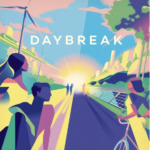
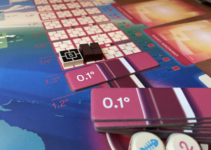
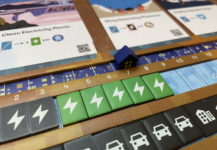

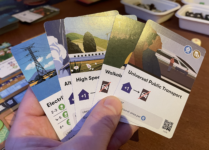
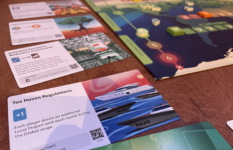


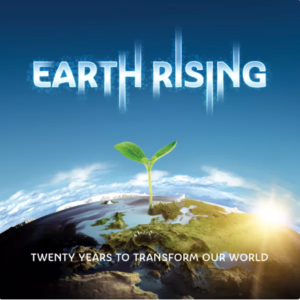
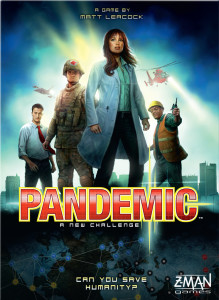
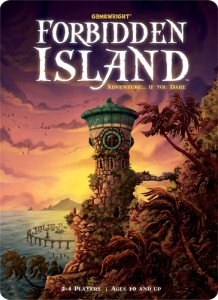
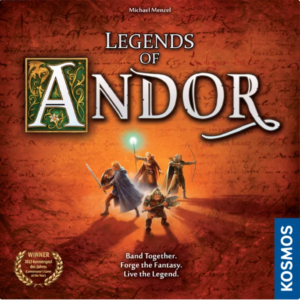

Sam says
Are board games the best medium to address the climate crisis? Maybe not, but debating the whys and wherefores would be missing the forest for the trees. The science is overwhelmingly in favour of climate change being man-made, and thus we have a responsibility to address it, and thus anything that raises awareness and keeps the conversation going, spreading, building, evolving, has an intrinsic value. Like Earth Rising, Daybreak isn't the best game design I've encountered from a mechanical point of view - and one could even argue it's a slightly convoluted abstract game of building sets of symbols. But the game is still good enough to be worthy of playing, and as a message and educational tool that helps normalise the pressing need for change, it's excellent.